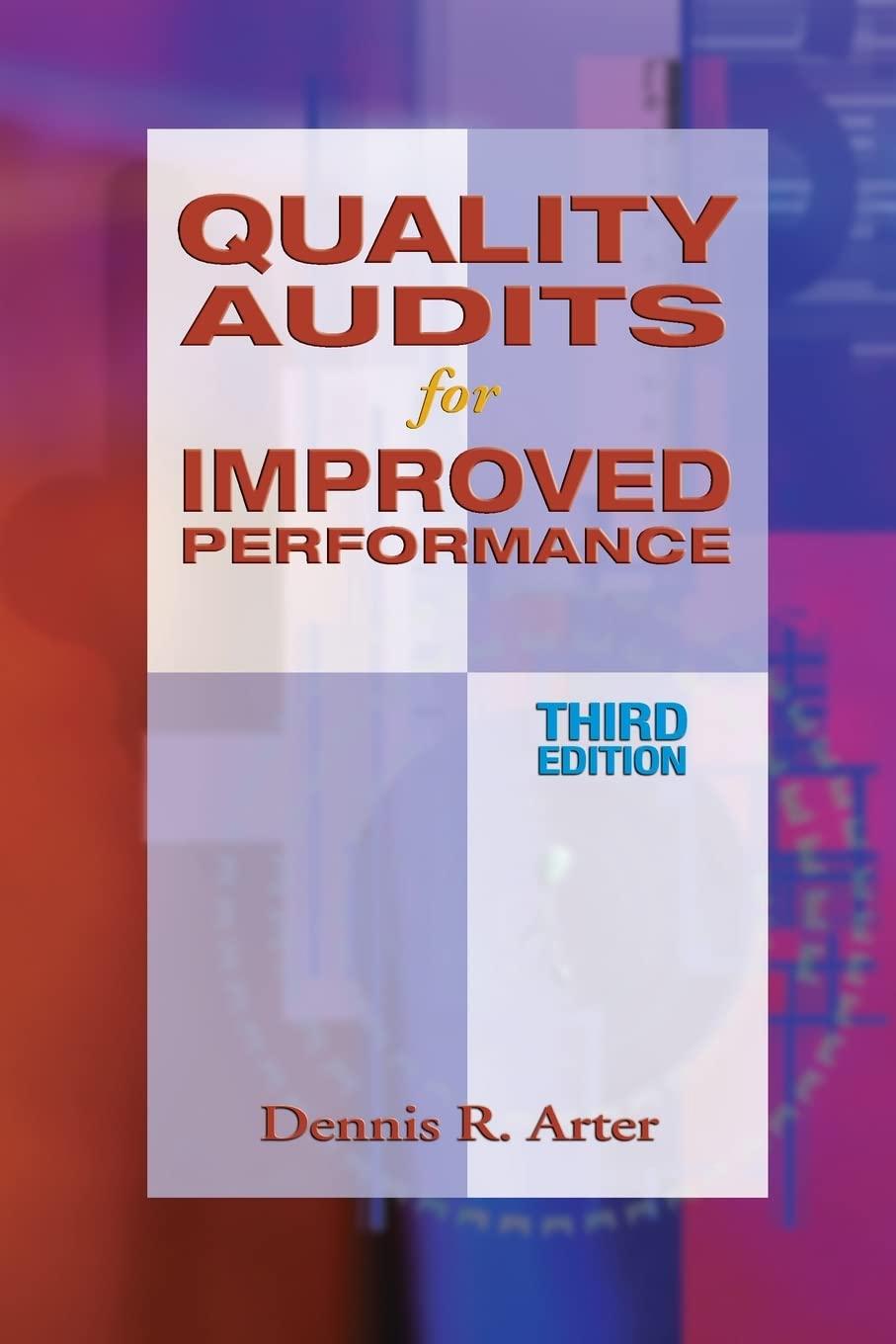Answered step by step
Verified Expert Solution
Question
1 Approved Answer
Case Study: Auditor's Responsibility for Non - Financial Information As an experienced auditor at a reputable accounting firm, you've been assigned to audit a large
Case Study: Auditor's Responsibility for NonFinancial Information
As an experienced auditor at a reputable accounting firm, you've been assigned to audit a large manufacturing company's financial statements. In addition to financial data, the company also discloses nonfinancial information related to sustainability, environmental impact, and social responsibility in its annual report. Your audit team is tasked with evaluating the reliability and accuracy of both financial and nonfinancial information to provide stakeholders with a comprehensive understanding of the company's performance and operations.
During the audit process, you implement various procedures to fulfill your responsibility for auditing nonfinancial information:
Understanding NonFinancial Reporting Frameworks: Begin by familiarizing yourself with relevant nonfinancial reporting frameworks and standards, such as the Global Reporting Initiative GRI or the Sustainability Accounting Standards Board SASB These frameworks provide guidelines for disclosing nonfinancial information and help assess the completeness and reliability of such disclosures.
Assessing Management's Processes and Controls: Evaluate the processes and controls implemented by management to collect, compile, and report nonfinancial information. This involves reviewing policies, procedures, and data collection methods to ensure accuracy, consistency, and transparency in nonfinancial reporting.
Testing Data Accuracy and Completeness: Conduct substantive testing to verify the accuracy and completeness of nonfinancial data disclosed in the annual report. This may include reviewing supporting documentation, performing analytical procedures, and testing the reliability of data sources used for nonfinancial reporting.
Evaluating Key Performance Indicators KPIs: Assess the appropriateness and reliability of key performance indicators KPIs used to measure the company's sustainability and social responsibility efforts. Verify the calculation methodologies, data sources, and underlying assumptions to ensure the integrity of KPI reporting.
Reviewing External Assurance Reports: Consider external assurance reports, if available, from thirdparty providers or internal audit functions that assess the company's nonfinancial performance. Review the scope, findings, and conclusions of these reports to gain insights into the effectiveness of management's controls over nonfinancial reporting.
Assessing Alignment with Organizational Objectives: Evaluate the alignment of nonfinancial disclosures with the company's strategic objectives, values, and stakeholder expectations. Determine whether nonfinancial reporting provides meaningful insights into the company's sustainability initiatives and social impact.
Communication with Stakeholders: Engage in dialogue with key stakeholders, including management, board members, and external parties, to gain perspectives on the relevance and reliability of nonfinancial information. Address any concerns or discrepancies identified during the audit process and provide assurance on the credibility of nonfinancial disclosures.
Objective Type Question:
Based on the case study, which step is essential for auditors to fulfill their responsibility for auditing nonfinancial information?
A Assessing Management's Processes and Controls
B Reviewing External Assurance Reports
C Testing Data Accuracy and Completeness
D Communication with Stakeholders

Step by Step Solution
There are 3 Steps involved in it
Step: 1

Get Instant Access to Expert-Tailored Solutions
See step-by-step solutions with expert insights and AI powered tools for academic success
Step: 2

Step: 3

Ace Your Homework with AI
Get the answers you need in no time with our AI-driven, step-by-step assistance
Get Started


